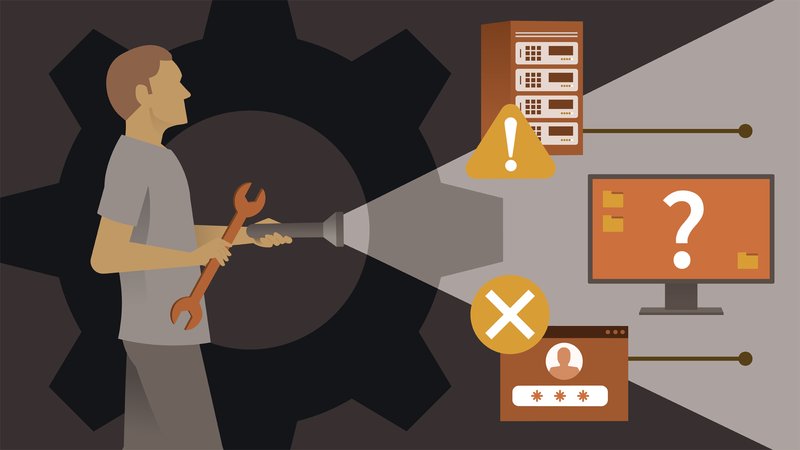
Honestly, if your smart deadbolt is ignoring voice commands, you’re not alone. Maybe your home’s Wi-Fi hiccuped, or maybe something weird happened during setup. Even the best smart locks—Yale, Kwikset, Ultraloq—can flake out sometimes. Let’s break down what might be happening, why it matters, and how to tackle each step without wanting to throw your phone across the room.
How Voice Commands Work With Smart Deadbolts
Before jumping into fixes, it helps to know what’s happening behind the scenes. When you ask your Amazon Echo or Google Nest to lock a door, your command travels from the assistant to the cloud, then to your smart hub or app, and finally to the deadbolt itself. Think of it like shouting an order across a busy restaurant: the message gets passed through a few hands before the chef (your lock) gets it.
Most smart deadbolts—like those from August, Schlage, or Yale—require a few things to work with voice commands:
- A compatible voice assistant or smart speaker (Alexa, Google Assistant, or Apple HomeKit)
- A stable Wi-Fi or Bluetooth connection
- The lock’s mobile app installed and set up
- Any required “bridge” device for Wi-Fi or cloud control
If any one of those links is broken, your lock ignores you. Knowing that chain helps narrow down where things might be going wrong.
Check Your Voice Assistant and Smart Lock Pairing
Here’s the thing—most issues start with a problem in the pairing or sync between the deadbolt and your smart assistant. Maybe your Google Home skill isn’t linked, or Alexa can’t find the lock anymore.
- Open your voice assistant’s app (like the Alexa or Google Home app).
- Check if the smart lock is listed under “Devices.”
- If it’s missing, you’ll need to re-pair or re-sync it.
- Make sure you’re logged into the right account.
Let me explain: Sometimes, it’s as silly as setting up your lock on your spouse’s phone, then expecting it to work from yours. Or maybe you changed your Wi-Fi password last week—your lock might’ve dropped off the network and the voice assistant can’t see it anymore. Reconnecting or resetting that relationship is often the fix.
Wi-Fi, Bluetooth, and Battery—The Usual Suspects
If pairing looks fine, the next classic culprit is your connection. Smart deadbolts either use Bluetooth, Wi-Fi, or both to talk to your phone and the cloud. Here’s what to check:
- Is your home Wi-Fi strong where the lock sits? If the router’s far away, the signal might drop in and out.
- Restart your router. I know, it sounds basic, but it’s amazing how often this works.
- If your lock uses Bluetooth for setup, make sure your phone is nearby and Bluetooth is on.
Batteries are also sneaky troublemakers. When they’re low, many smart locks get weird—sluggish, unresponsive, or silent to remote commands. Pop the back cover and swap in fresh batteries. Most models flash or beep to warn you, but sometimes they just stop playing nice.
Even the fanciest smart locks go brain-dead when the batteries are drained or the Wi-Fi is down. Always check those first—they’re the most common reasons a smart deadbolt doesn’t respond to voice commands.
Updating and Resetting Software & Firmware
You might be wondering: “Does my deadbolt really need updates?” Absolutely. Like any tech, smart locks run on code that gets buggy or outdated. If you haven’t checked for updates in a while, now’s the time.
- Open the lock’s app (August, Schlage Home, Yale Access, etc.).
- Look for a firmware update option—usually under “Settings” or “About Device.”
- If there’s an update, run it. This can fix code bugs that break voice control or sync.
If updates don’t do the trick, a factory reset might. It sounds scary (and yes, you’ll need to re-pair the lock afterward), but it wipes out weird glitches that have built up. Each brand does this a little differently—sometimes it’s holding down a button, sometimes it’s removing a battery. Check your model’s manual or the app for reset steps.
Re-Enable Skills, Integrations, and Permissions
With Alexa, Google Assistant, or Apple HomeKit, *skills* and permissions connect the dots between your lock and your voice assistant. If your August lock is ignoring you, double-check that the skill hasn’t been disabled.
- In your assistant’s app, open the “Skills” or “Third-Party Integrations” section.
- Find your lock’s app (like “August Smart Home” or “Schlage Encode”).
- Try disabling and re-enabling the skill.
- Re-link your account if prompted.
Permissions can also block voice commands. For example, Alexa might need special access to control locks for security reasons. You might even need to set a voice code or PIN. These extra steps are meant to keep your home safe, but they can also trip you up during setup.
Physical Issues and Installation Mistakes
Let’s be honest—sometimes it’s not the code or the Wi-Fi. Sometimes, the lock just isn’t installed right. Maybe the deadbolt sticks. Maybe the door isn’t lined up. If your smart deadbolt can’t physically move, no app or command can fix it.
- Manually turn the lock using the thumbturn or key. Does it stick or jam?
- Check for misalignment: some doors swell or sag, especially with weather changes.
- If you hear the deadbolt motor trying (a whirring or clicking sound) but nothing moves, there’s likely a mechanical issue.
A lock that’s physically stuck will ignore all digital commands. Lubricate the bolt, tighten any loose screws, and make sure the strike plate is lined up perfectly. If you just installed the lock, triple-check the instructions. Even small mistakes mounting the hardware can keep your smart deadbolt from responding.
Comparing Brands and Universal Troubleshooting
Different smart lock brands have their own quirks. August and Yale often use bridge devices. Schlage Encode connects directly to Wi-Fi. Kwikset Halo has its own app and code language. But almost all troubleshooting steps overlap:
- Check for app updates and firmware patches.
- Reset and re-pair the lock if you hit a wall.
- Make sure the assistant skill is active and permissions are granted.
Some users try “universal” remote or automation hubs like SmartThings or Home Assistant. These can help if you’ve got lots of brands and want everything to play nicely together. Just remember: adding more hubs can also add more points of failure. Keep it simple unless you’re ready to get nerdy with code and advanced troubleshooting.
Most smart deadbolt issues are solved by retracing your steps: connection, app, update, and—if all else fails—a full reset.
When To Contact Support or Consider Replacement
If you’ve tried everything—re-syncing, updating, resetting, checking batteries, and physically inspecting the lock—and your deadbolt still ignores voice commands, it might be time to call in backup. Brand support (August, Schlage, Yale, etc.) can walk you through advanced troubleshooting or warranty replacement.
Provide them with:
- Your lock’s model and app version
- When the problem started
- Any error codes or beeps
- What you’ve already tried—so you don’t repeat steps
Sometimes, hardware just fails. Bluetooth radios can die, Wi-Fi chips can burn out, or the motor wears down. If your smart deadbolt is several years old or has survived a few Minnesota winters, honestly, it might just be time for a new one.
Wrapping Up: Bring Your Smart Deadbolt Back Online
Dealing with a smart deadbolt that won’t answer your voice is equal parts annoying and confusing—but it’s rarely hopeless. Most problems are solved with a good old-fashioned check of the basics: Wi-Fi, batteries, app sync, and permissions. If you walk through the steps calmly and methodically, you’ll usually find the snag. And if your trusty Schlage, August, or Yale still stays silent, the brand’s support team is just a call away. Getting your smart home back on track is possible—just one voice command at a time.
